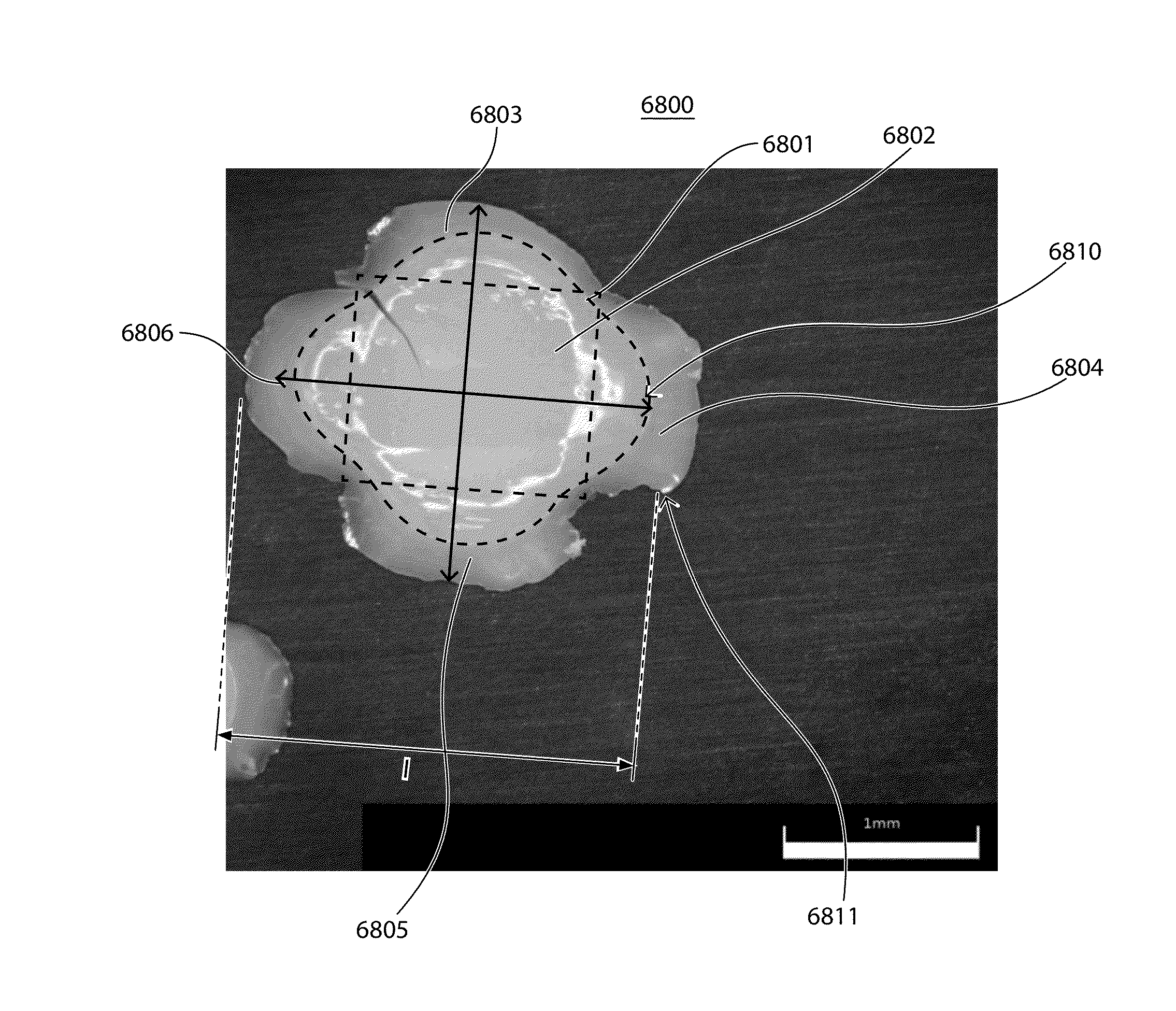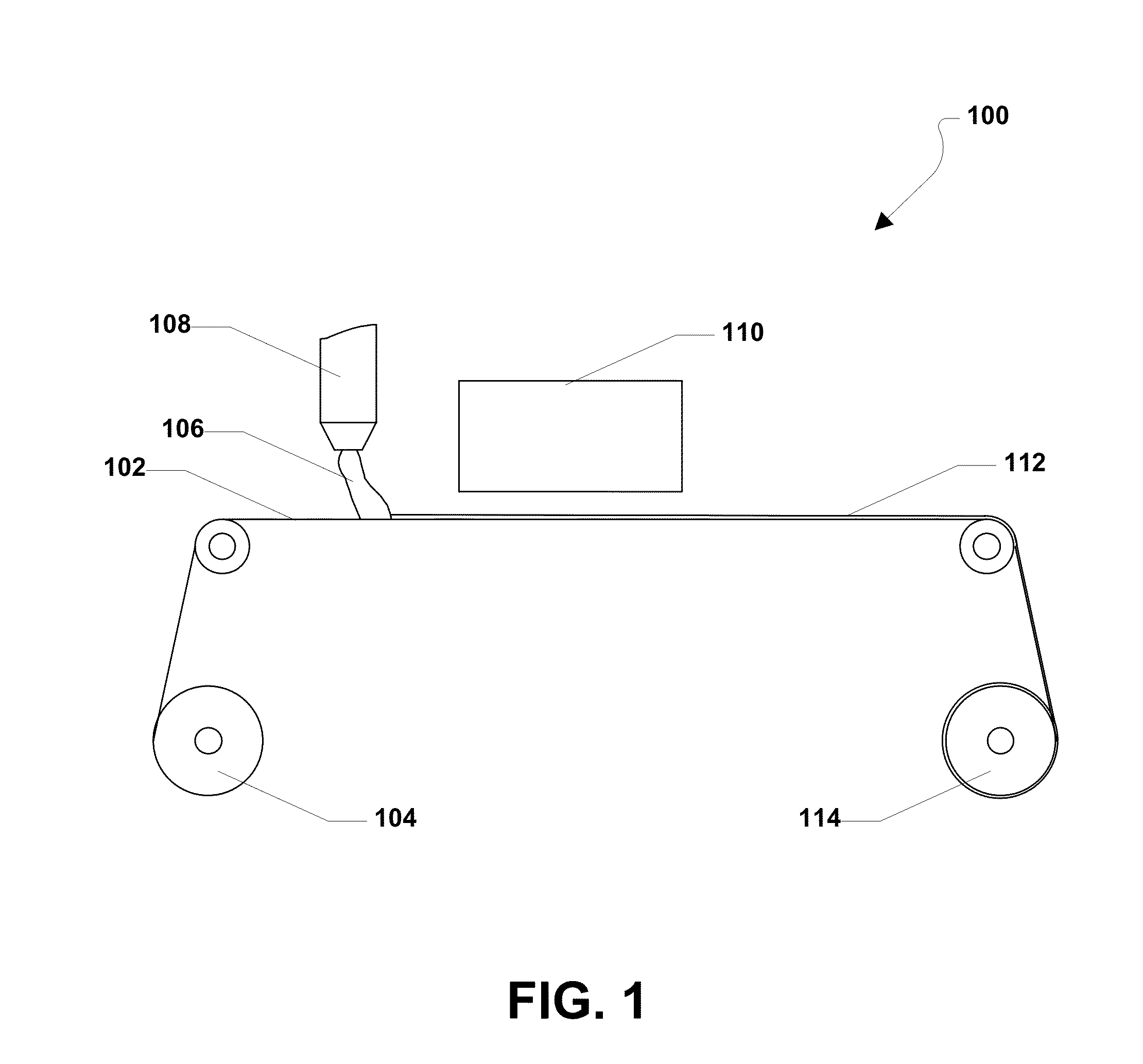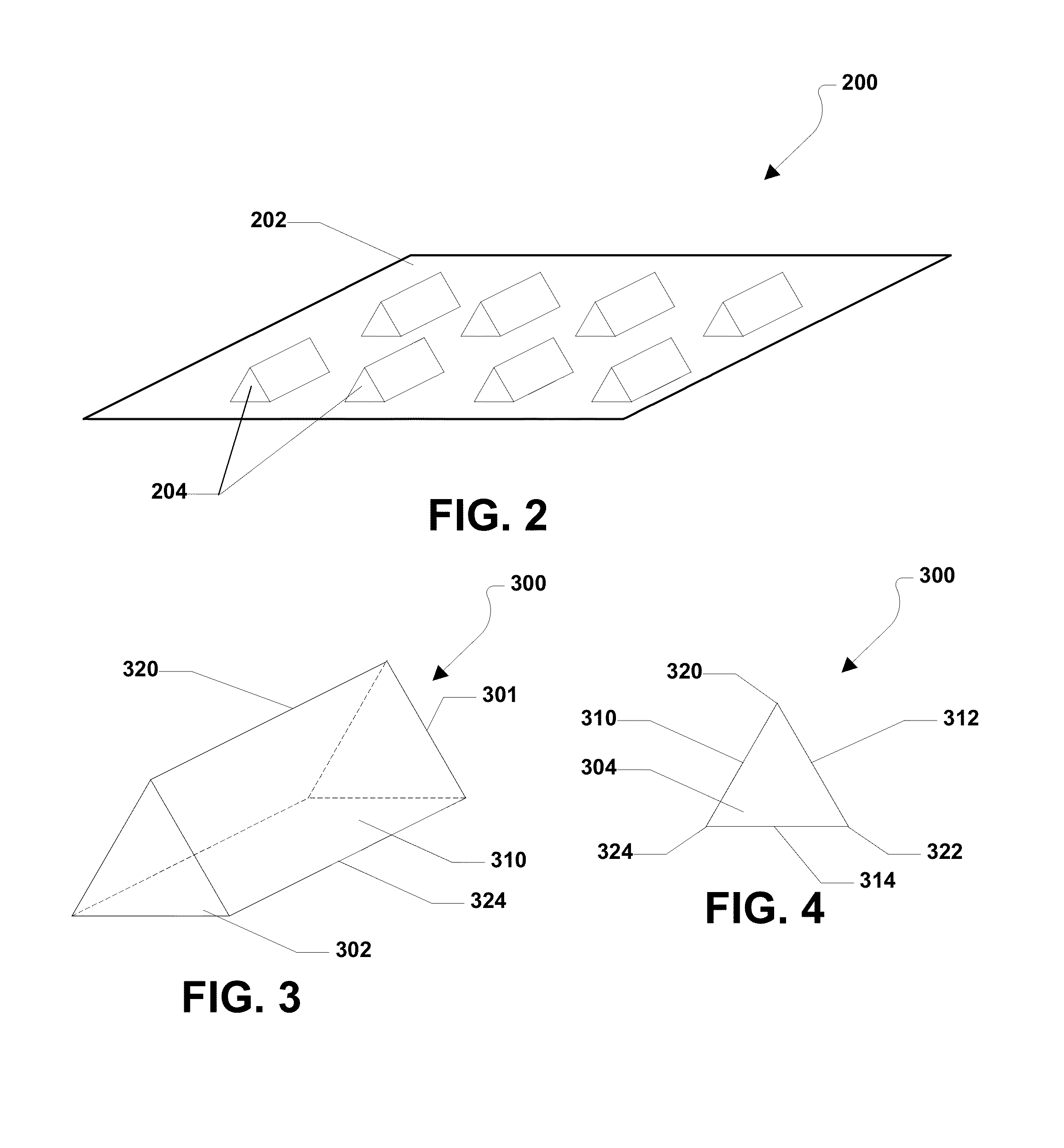Abrasive particles having complex shapes and methods of forming same
a technology of abrasive particles and shapes, applied in the field of can solve the problems of unreliable typical techniques for forming structured abrasive articles, slow production, and performance limitations
- Summary
- Abstract
- Description
- Claims
- Application Information
AI Technical Summary
Benefits of technology
Problems solved by technology
Method used
Image
Examples
example 1
[0296]A mixture in the form of a gel is obtained having approximately 42% solids loading of boehmite commercially available as Catapal B from Sasol Corp. combined with 58 wt % water containing a minority content of nitric acid and organic additives. The gel has a viscosity of approximately 3×103 to 4×104 Pa·s and a storage modulus of 3×104 to 2×105 Pa.
[0297]The gel is extruded from a die using a pressure of up to 80 psi (552 kPa) onto a mold blank of polycarbonate and into a plurality of openings, wherein each of the openings are in the shape of a three-pointed star. The surfaces of the openings within the mold blank have been coated with canola oil. The openings define three-pointed star two-dimensional shapes having a length of approximately 5-7 mm, a width of 3-5 mm, and a depth of approximately 0.8 mm. The openings have tip angles of approximately 35 degrees, and an interior angle between the three arms of approximately 225 degrees.
[0298]The gel is extruded into the openings and...
example 2
[0299]The process of Example 1 was used with the exception that the mold blank utilized openings defining a four-point star shaped two-dimensional shape having a length of approximately 7-9 mm, a width of 7-9 mm, and a depth of approximately 0.8 mm. The openings have tip angles of approximately 25 degrees, and an interior angle between the three arms of approximately 250 degrees. FIG. 66A is an image of a representative particle formed from Example 2. The body has a curling factor of less than 5.
example 3
[0300]The process of Example 1 was used with the exception that the mold blank utilized openings defining a cross-shaped two-dimensional shape having a length of approximately 5-6 mm, a width of 5-6 mm, and a depth of approximately 0.8 mm. The arms have a width of approximately 2 mm and a length of approximately 1 mm. FIG. 67 is an image of a representative particle formed from Example 3. The body has a curling factor of less than 5.
[0301]The present application represents a departure from the state of the art. While the industry has recognized that shaped abrasive particles may be formed through processes such as molding and screen printing, the processes of the embodiments herein are distinct from such processes. Moreover, the resulting shaped abrasive particles have one or a combination of distinct features from particles formed according to conventional approaches. The shaped abrasive particles of the embodiments herein can have a particular combination of features distinct from...
PUM
| Property | Measurement | Unit |
|---|---|---|
| Fraction | aaaaa | aaaaa |
| Angle | aaaaa | aaaaa |
| Angle | aaaaa | aaaaa |
Abstract
Description
Claims
Application Information
 Login to View More
Login to View More - R&D
- Intellectual Property
- Life Sciences
- Materials
- Tech Scout
- Unparalleled Data Quality
- Higher Quality Content
- 60% Fewer Hallucinations
Browse by: Latest US Patents, China's latest patents, Technical Efficacy Thesaurus, Application Domain, Technology Topic, Popular Technical Reports.
© 2025 PatSnap. All rights reserved.Legal|Privacy policy|Modern Slavery Act Transparency Statement|Sitemap|About US| Contact US: help@patsnap.com



